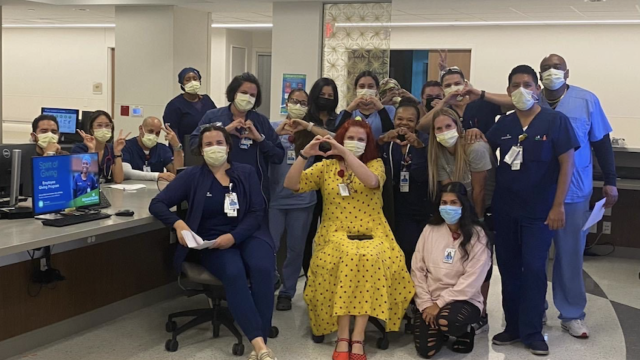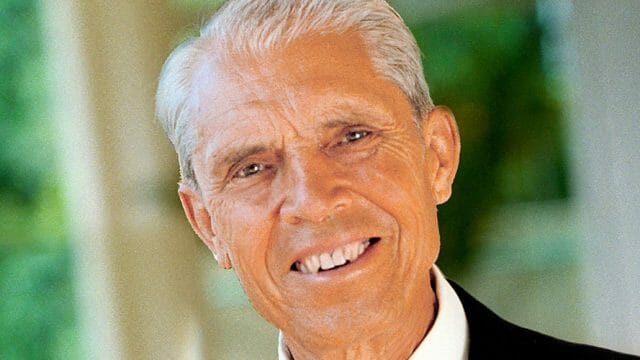The 51 hospitals and hundreds of other care sites came under a single promise, “Feel whole.”

In January 2019, the hospitals of what was known as Adventist Health System unified under a single brand: AdventHealth. Except for the system’s joint ventures, the 51 hospitals and hundreds of clinics and care sites now operate under a single moniker and carry a common brand promise: “Feel whole.”
AdventHealth’s brand promise is central to its public-facing messaging and is closely connected to the organization’s mission of Extending the Healing Ministry of Christ.
Reminiscent of the discourse in which Jesus said, “I came that they may have life and have it abundantly” (John 10:10, ESV), the brand promise suggests that even the healthiest among us can aspire to feel whole.
In the same way, however, that the ministry of Seventh-day Adventist health care is connected to but distinct from the ministry of the denomination’s ecclesiastical arm, the corporate messaging of AdventHealth hopes to strike chords of harmony with that of the church, even while hitting different notes.
The Adventist Church and Marketing and Communications
The Seventh-day Adventist Church has no doctrinal teaching, statement, or guideline that speaks directly to the need the church and its ministries have for communications, marketing, and brand awareness. The importance of the message and teachings of the church, however, has led to the practice of using creative and varied marketing methods from the earliest days of the Advent movement.
Whether it was to sell books and other publications or to bolster attendance at a seminar on Bible prophecy, church leaders, limited only by their creativity and financial resources, have regularly used attention-seeking strategies to raise awareness regarding their efforts.
In 1912, Baltimore journalist Walter L. Burgan attended an evangelistic series by Carlyle B. Haynes and became a convert to the Seventh-day Adventist Church. He was then hired to be the head of the Public Relations Bureau of the General Conference, making the Seventh-day Adventist Church the first Protestant denomination with a public relations program. Church leaders recognized the critically important role of combating misinformation, breaking down prejudices, and building bridges of understanding in the community to raise public awareness of the young denomination. The Public Relations Bureau became the communications department of the church, and it continues to be tasked with the same charge.
Although the denomination has grown exponentially since those early years, and communications have become an established department at all levels of the organization, the focus of church communications is predominantly internal, with most efforts directed toward members. Beyond the signage placed in front of congregations, schools, and office buildings, very few resources are allocated to public awareness.
Messaging Distinctive Care
Several scriptural models support the assertive approach AdventHealth takes in its advertising and public relations efforts, especially those that seek to distinguish the efforts of the faith-based, consumer-focused institution it aspires to become. One vivid example comes from the pages of Exodus.
Moses is standing before God in the Tent of Meeting outside the Israelite encampment. He has just received tablets of stone from God for the second time. Moses is pleading with God that the Divine presence should accompany the chosen people on their journey to the Promised Land rather than the presence of an angel, as God had proposed in response to the insurrection that had just occurred.
“ ‘How will anyone know that you are pleased with me and your people unless you go with us?’ ” Moses argued. “ ‘What else will distinguish me and your people from all the other people on the face of the earth?’ ” (Exodus 33:16, NIV).
In this discourse, we find an essential goal of AdventHealth’s marketing and communications efforts: to show the distinctive nature of whole-person care that has become the hallmark of Seventh-day Adventist health care.
Whole-person care, which functions as an extension of Christ’s healing ministry, is distinctive from the care that other healing organizations provide. While all evidence-based medicine is best rendered with compassion and seeks to be curative, the distinctive faith-based, whole-person care is meant to be restorative, referencing the image of the Creator found in every living soul and balancing physical, mental, and spiritual well-being.
Just as Moses knew the presence of God in the massive company of Israelite migrants would set them apart as a distinct nation, AdventHealth believes in the legacy of whole-person care, which recognizes the image of God in every human being and seeks the presence of God in every patient interaction, and will distinguish it from all others who merely desire physical healing.
Honoring the Story of the Healed
During His Galilean ministry, Jesus was asked by a ruler of the synagogue to heal his critically ill daughter. While accompanying Jesus toward the home of Jairus, the crowd noticed Him stopping firmly in His tracks. An unanticipated act of healing had just occurred. A woman who sought a miracle in stealth and silence would be cajoled by Christ to speak openly about what God had done.
“When she heard about Jesus, she came up behind him in the crowd and touched his cloak, because she thought, ‘If I just touch his clothes, I will be healed.’ Immediately her bleeding stopped and she felt in her body that she was freed from her suffering” (Mark 5:26-29, NIV).
AdventHealth team members labor daily under the mission of Extending the Healing Ministry of Christ and desire to be the garment that functions as the conduit between the healing power of God and the desire residing in every AdventHealth consumer — namely, to feel whole.
The account of the woman who was healed by the faith-filled brush with Christ’s garment does not end, however, with her healing but with her story. Christ would not let this woman leave His presence before giving witness to what had happened in her life in a moment so private that, were it not for His insistence, it would have gone unnoticed.
The marketing materials and brand advertising of AdventHealth also take up this challenge. Ultimately, the fuel giving validity and power to the television commercials, billboard ads, and marketing campaigns are the real stories of healing that happen every day in the skilled and compassionate care of team members.
“Go in peace and be freed from your suffering” were the closing words uttered by Jesus as the woman departed. The peace in her heart, the relief on her face, and the lightened steps of one who had so long carried the burden of her condition are the same sentiments conveyed in AdventHealth’s advertisements. This is what it looks like to feel whole. In AdventHealth’s marketing messages, the heroes of the story are always those who have been healed.
The original version of this commentary was posted by the Mid-America Union Conference Outlook magazine.








